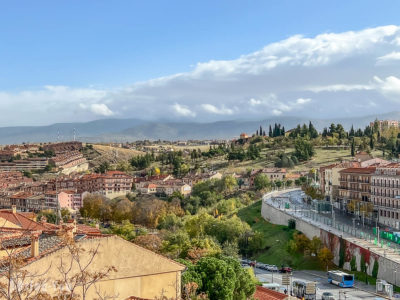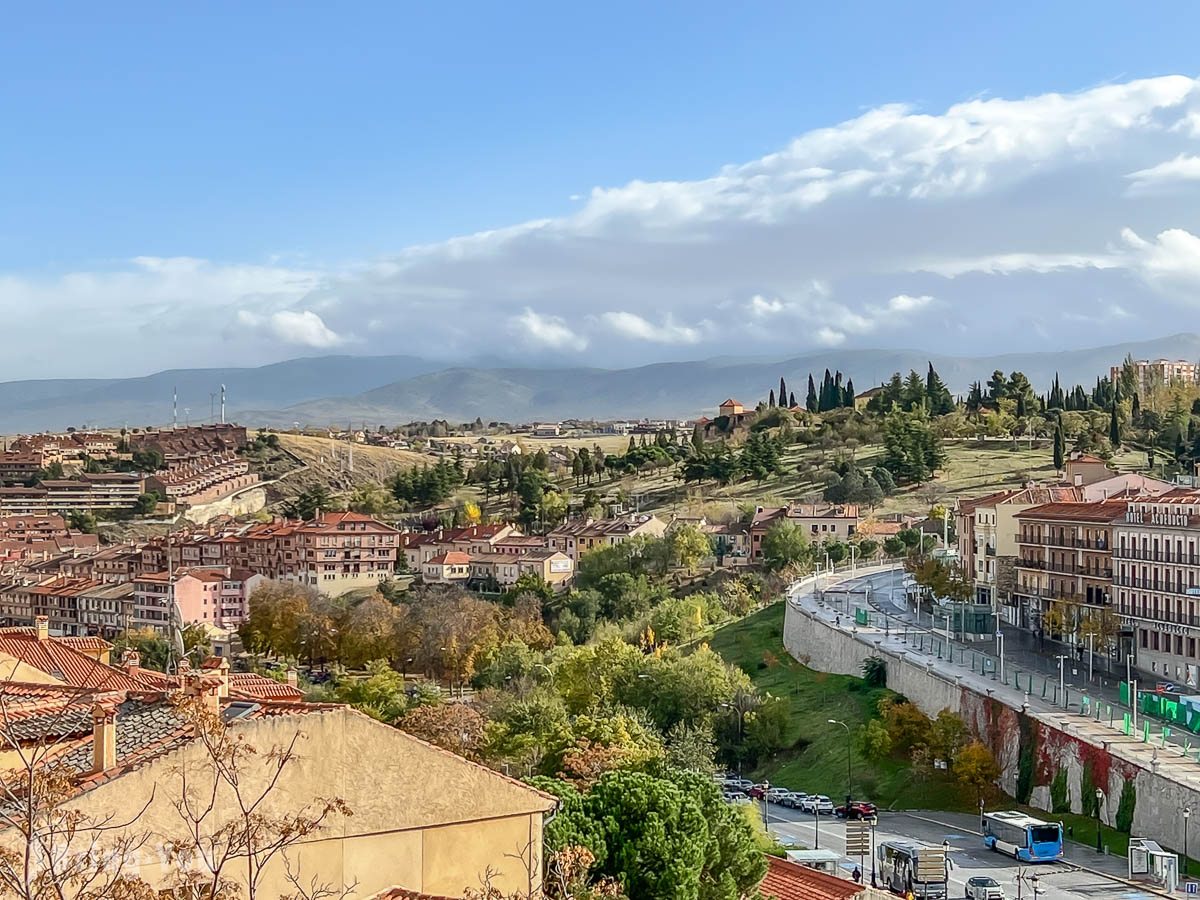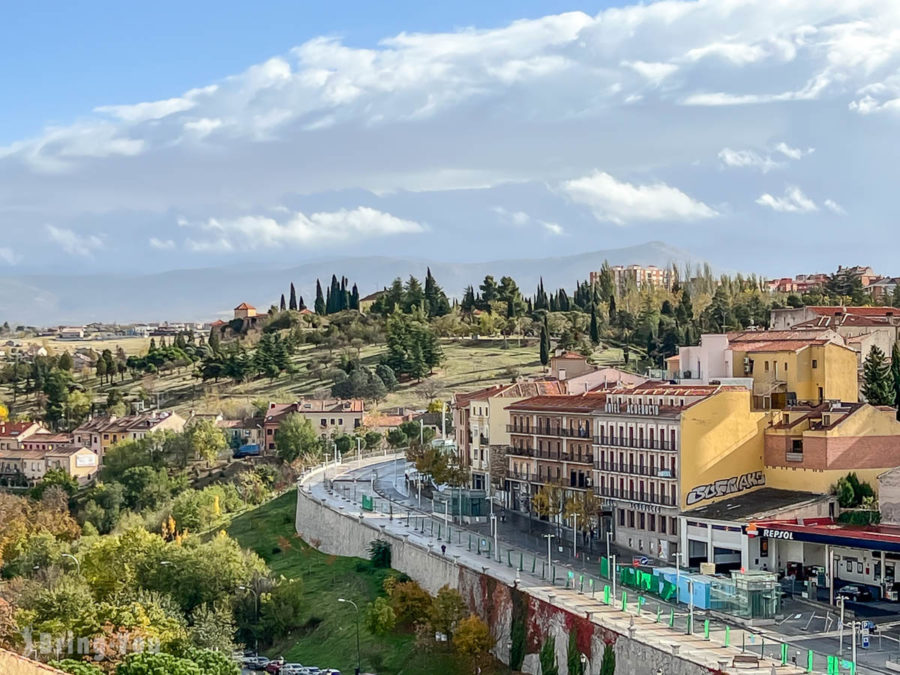
Situated 91 kilometers from Madrid, Segovia is a great destination for history buffs and day-trippers. The small city is walkable and safe. You can easily fit in most of the attractions for a day without a need for an overnight stay.
To make the most of your trip to Segovia, start in the morning with a high-speed train or an hour bus ride. Right here, head out to the Roman Aqueduct first thing and walk your way back to Plaza Mayor to explore the surrounding area.
Recognized as a World Heritage City, Segovia is a small charming town with a rich history and beautiful vantage points. On top of that, you’ll be amazed at their regional treats and local desserts which I’m gonna reveal later in the article!
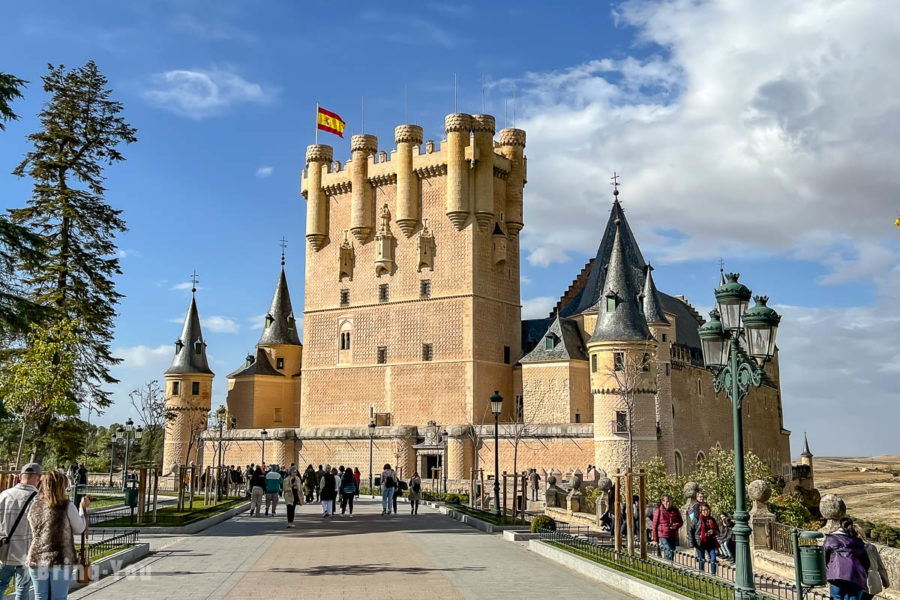
Read on to explore how to plan a day in Segovia!
How To Get To Segovia From Madrid?
By High-Speed Train
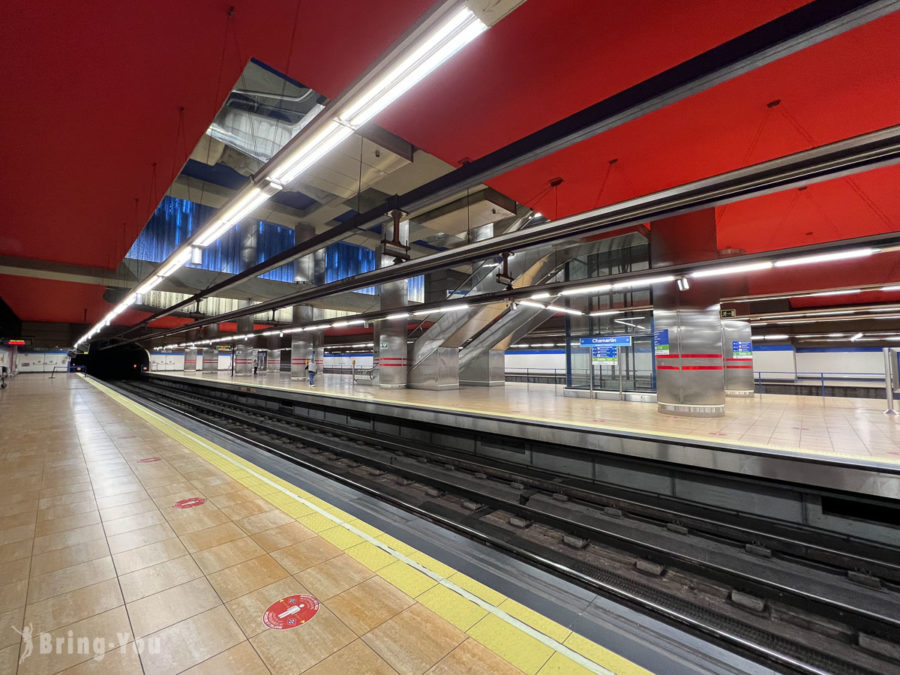
Take the AVE high-speed train if you’re short on time. Officially known as “Alta Velocidad Española,” the ride lasts half an hour and costs roughly EUR 12.
This high-speed train leaves from Madrid’s Chamartin Train Station to Segovia’s Guiomar Station.
By Bus
The bus tickets are more affordable than the train yet it doesn’t take too much time to reach Segovia. You only need an hour on the bus, leaving Moncloa Station and arriving at the city center right across the Roman Aqueduct.
You’ll find plenty of automated ticket machines at Moncloa Station to claim your journey. They accept credit cards too.
Keep in mind that the roundtrip ticket is typically valid for one day. If your stay extends beyond that, opt for a one-way ticket.
An Organized Tour
You can easily opt for a day trip from Madrid to Segovia if you’re traveling with seniors or children. The ease of transport with pick-up and drop-off included will make your trip a lot more fun to enjoy.
Some packages cover major attractions in Segovia such as the Alcazar and the Cathedral, adding an extra visit to Toledo.
Read More: What Is Toledo Best Known For? A Handy Guide With Activities, Transport, & Places To Stay
How Do You Travel Around Segovia?
The small footprint allows you to get around Segovia easily on foot, and you can cover most of the usual sights in the Old Quarter just by walking.
From Segovia Bus Station, head straight to the Roman Aqueduct of Segovia in a short seven-minute walk.

Alternatively, opt for a taxi between the train/bus station to your first destination. Metered taxis are affordable here and are a great call if you’re in a group.
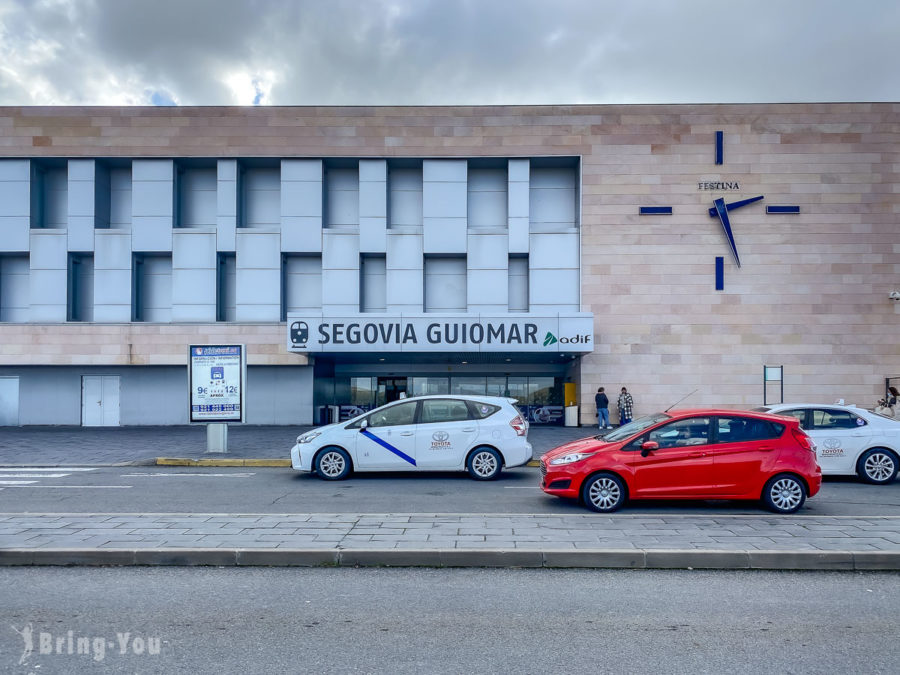
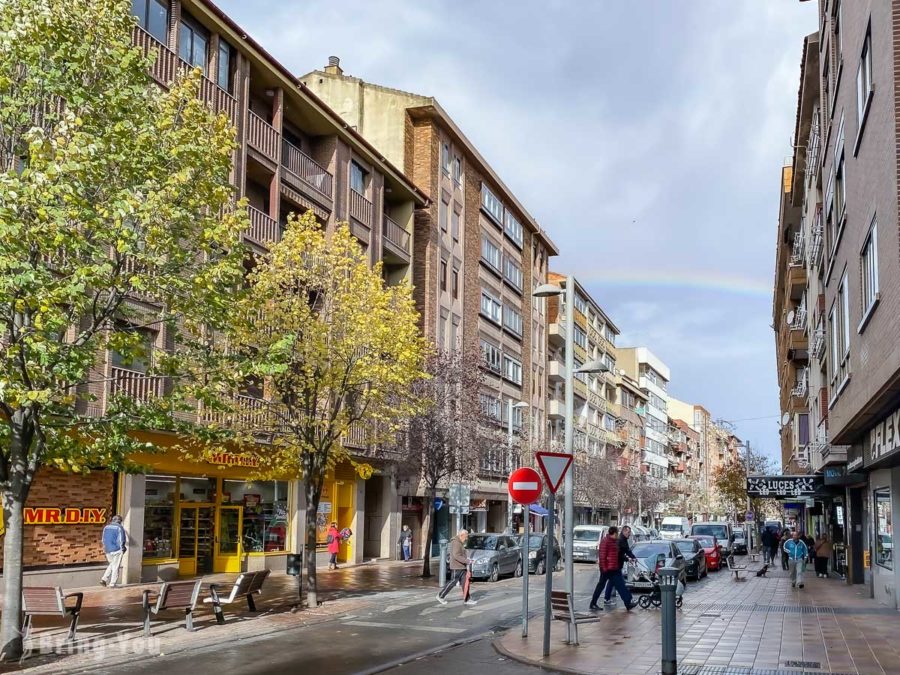
8 Best Places To Visit In Segovia
The ancient town is small yet charming and you can easily fit many activities into a day trip.
A leisure walk down the alleyways is so relaxing so there’s no reason to rush at all.
Here are my favorite things to do in Segovia to inspire your full-day visit, starting with the aqueduct – the most important landmark in Segovia.
Roman Aqueduct of Segovia
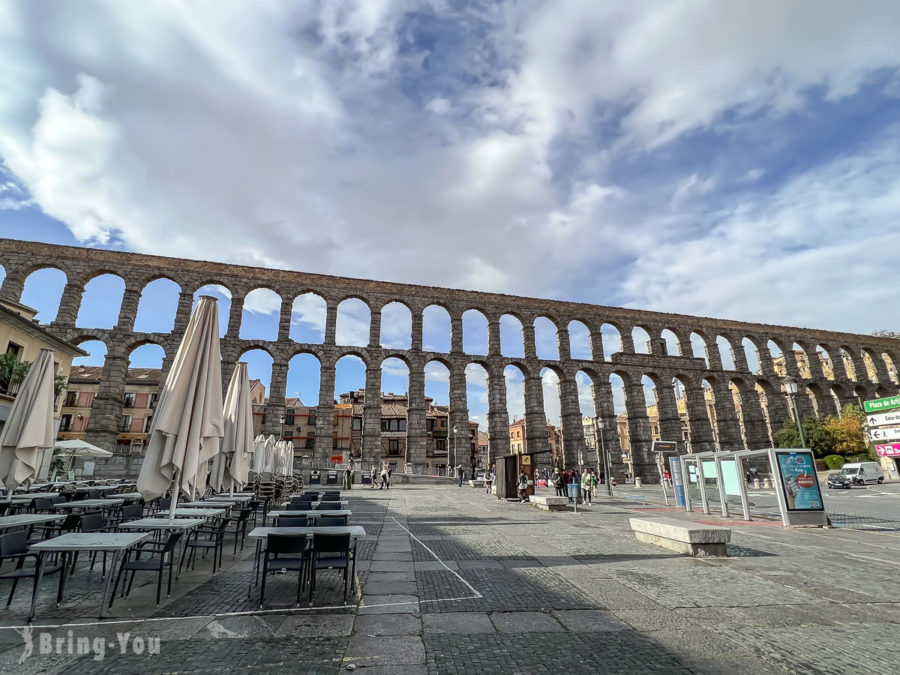
The Aqueduct of Segovia is one of the most remarkable Roman architectures the world has ever seen. Erected during the second half of the 1st century A.D., the aqueduct transferred water from the Frío River to the city.
Today, only 28.5 meters of the original structure remained intact.
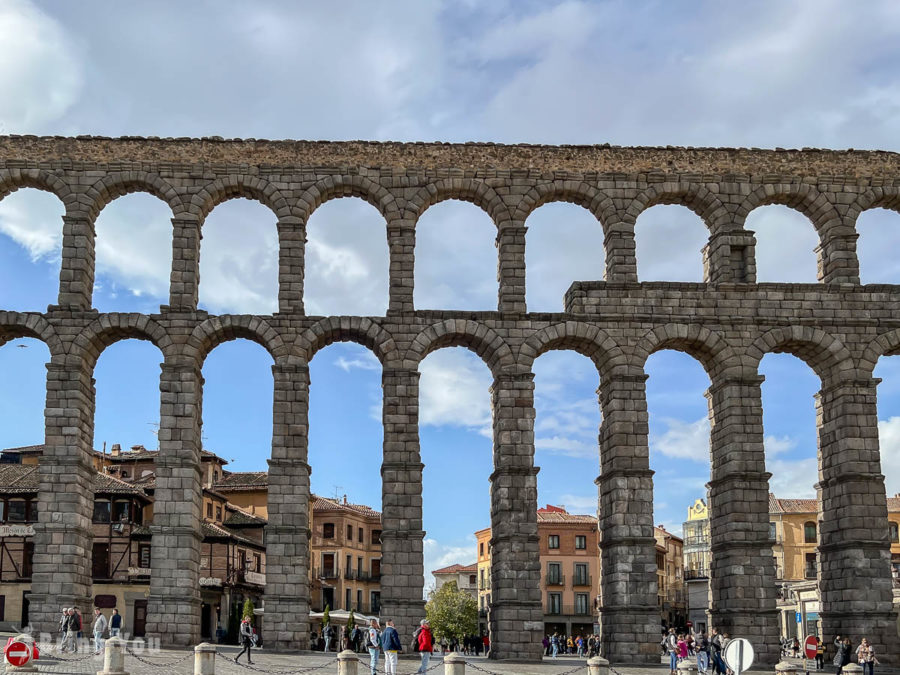
Stretching across 14 kilometers of undulating terrain, the aqueduct gracefully adapts to the valley, hills, and cityscape, exuding a majestic and monumental presence.
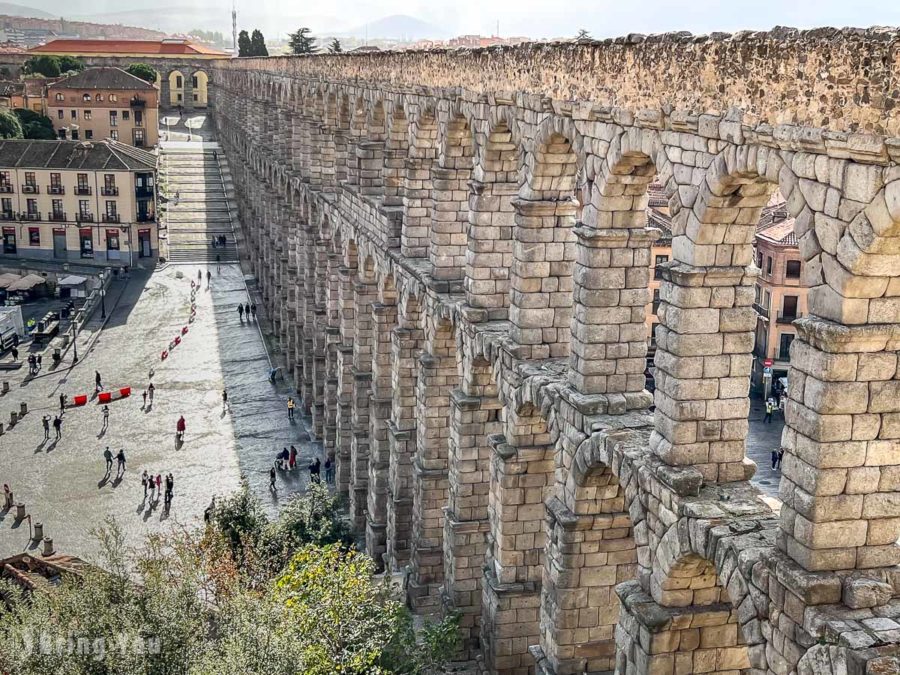
The focal point for most visitors is the aqueduct bridge, the central segment of this impressive structure.
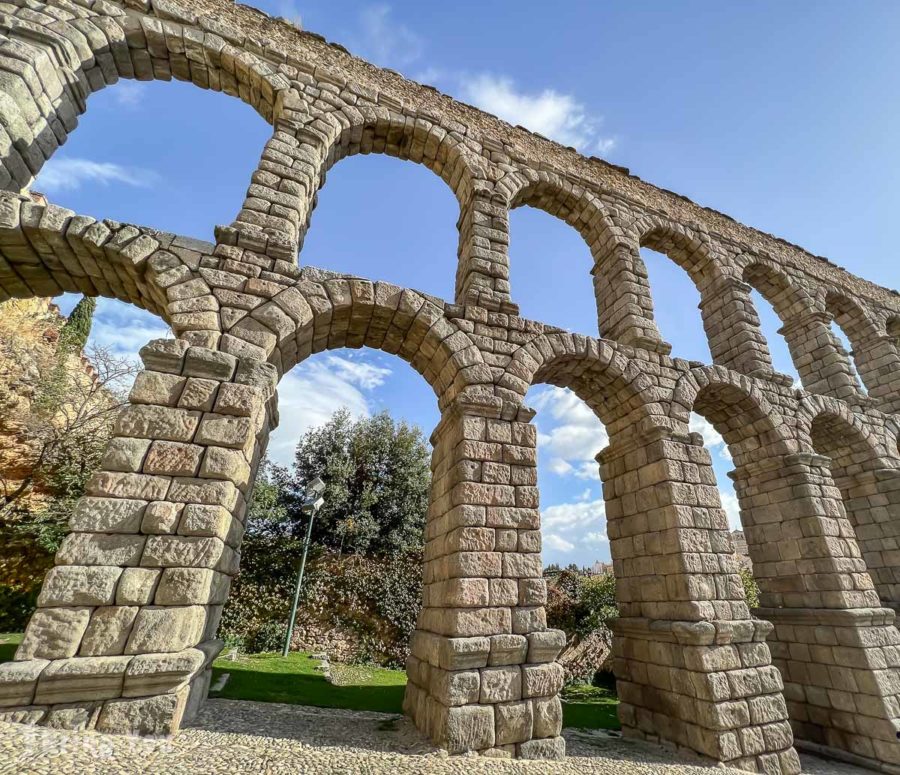
Converging with the city walls at Postigo del Consuelo (near the Tourist Information Office), you can ascend a staircase that offers an almost panoramic view of the arches and the picturesque surrounding countryside.
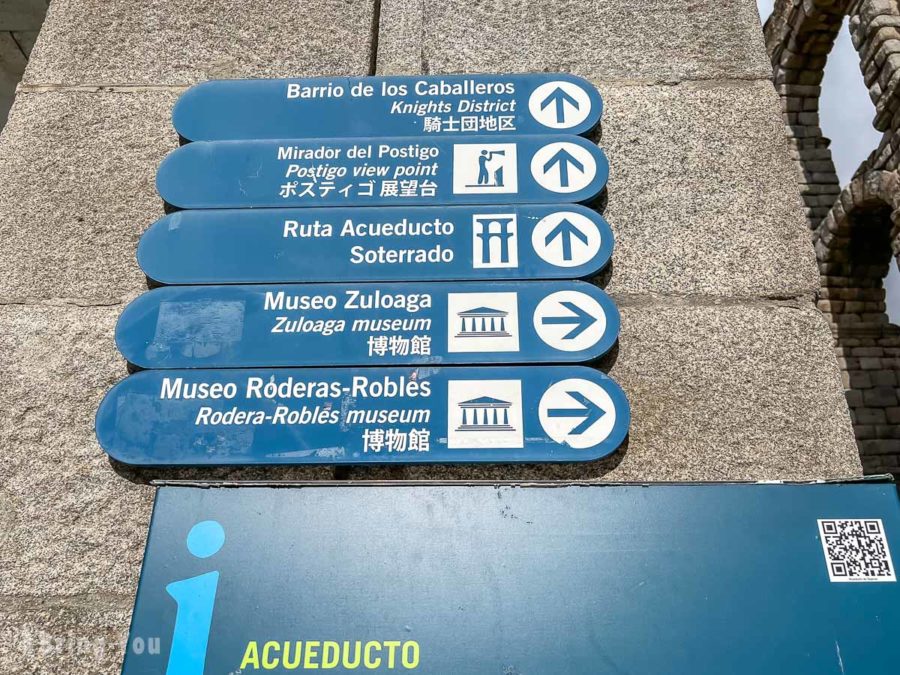
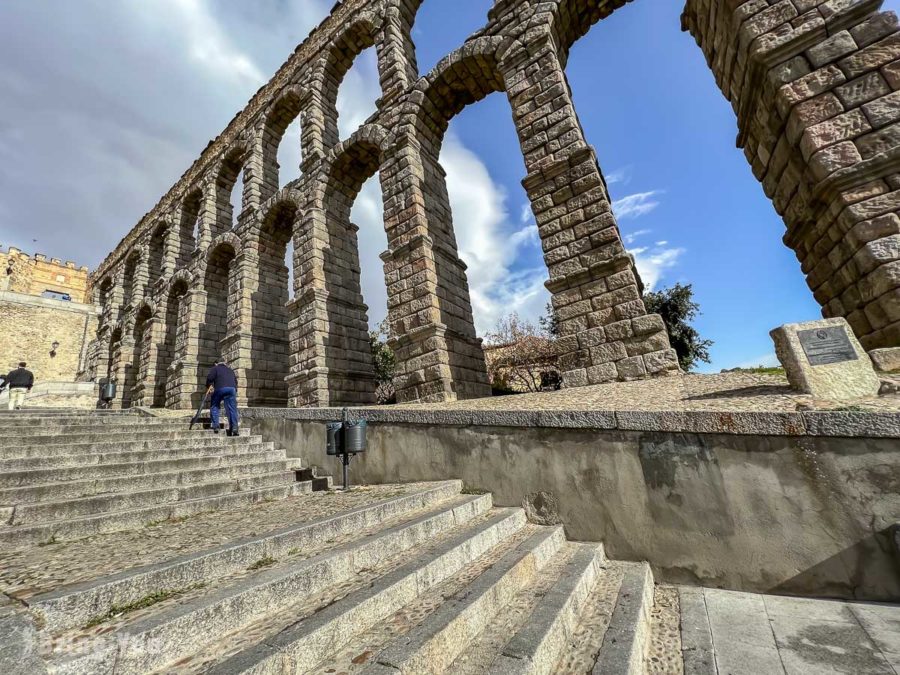
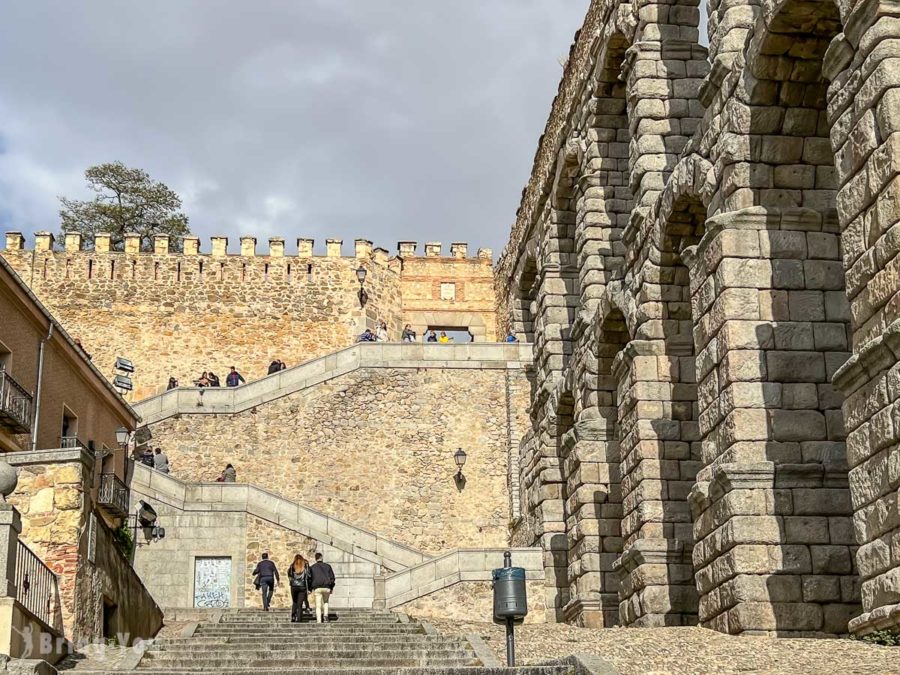
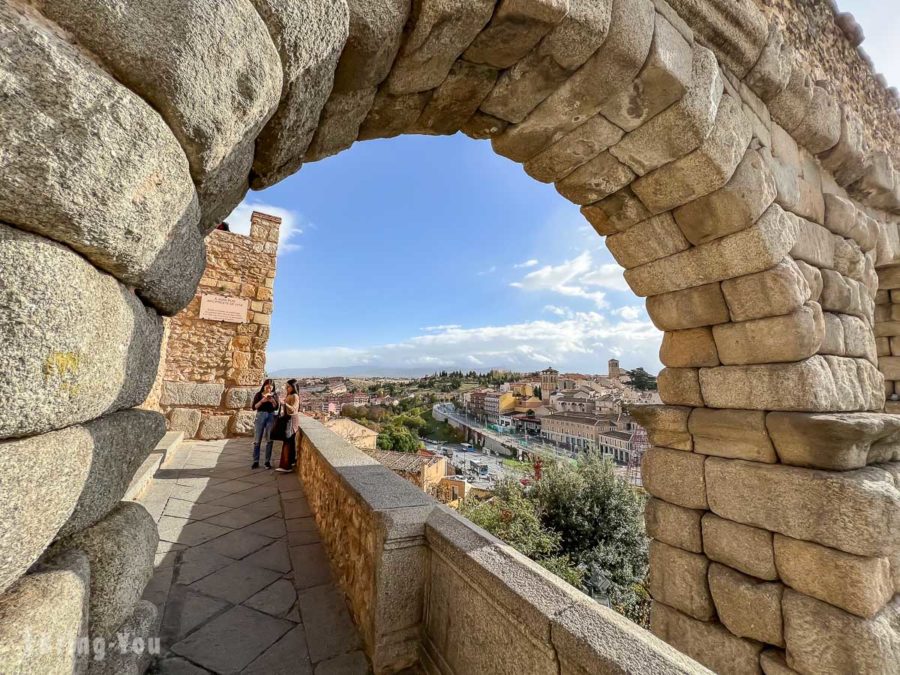
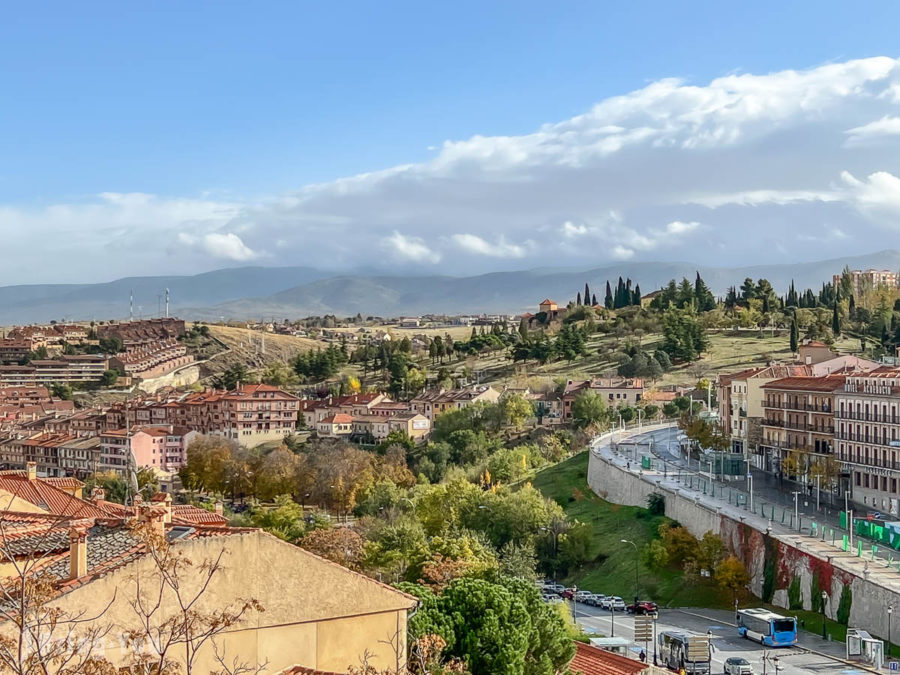
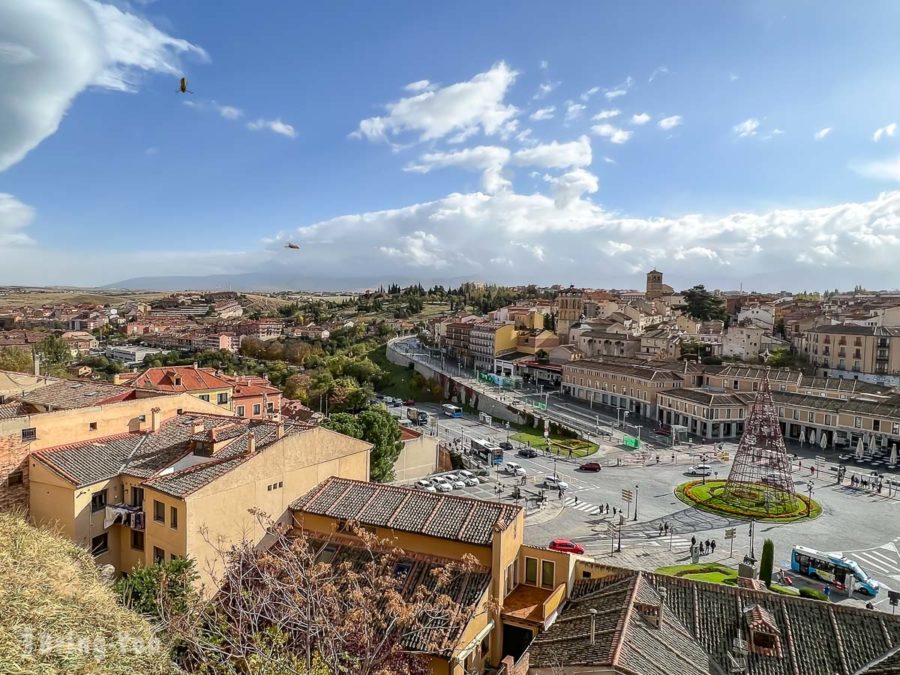
Loba Capitolina
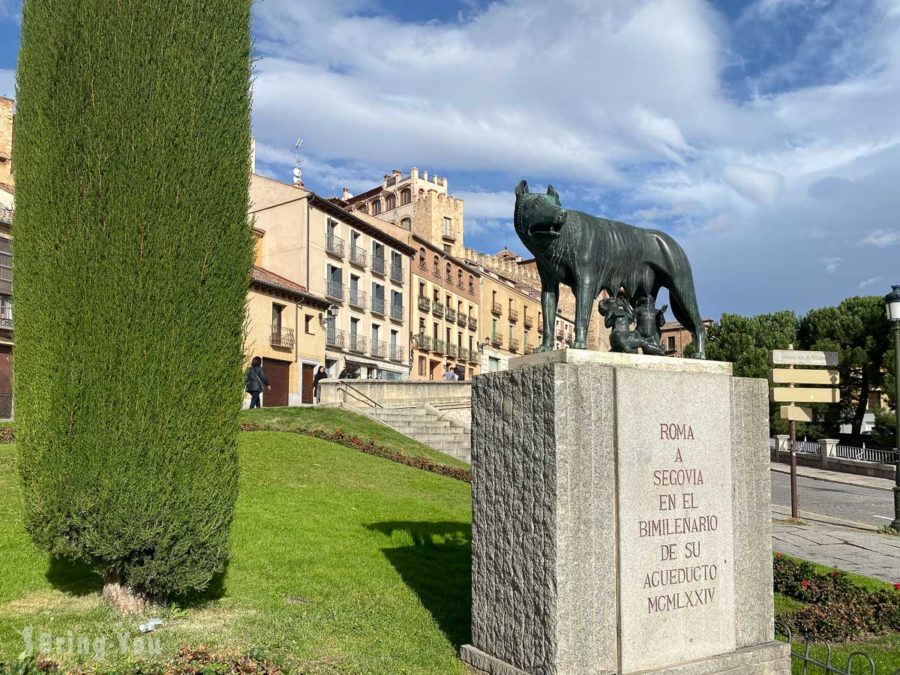
Just across the road by the roundabout where the bus stops, Loba Capitolina juts out from a small green space, beckoning attention with a wolf sculpture. Loosely translated as the Capitoline Wolf, the statue was created by the Romans to symbolize Luperca, an ancient animal that suckled the founders of Rome.
Church of San Stephen
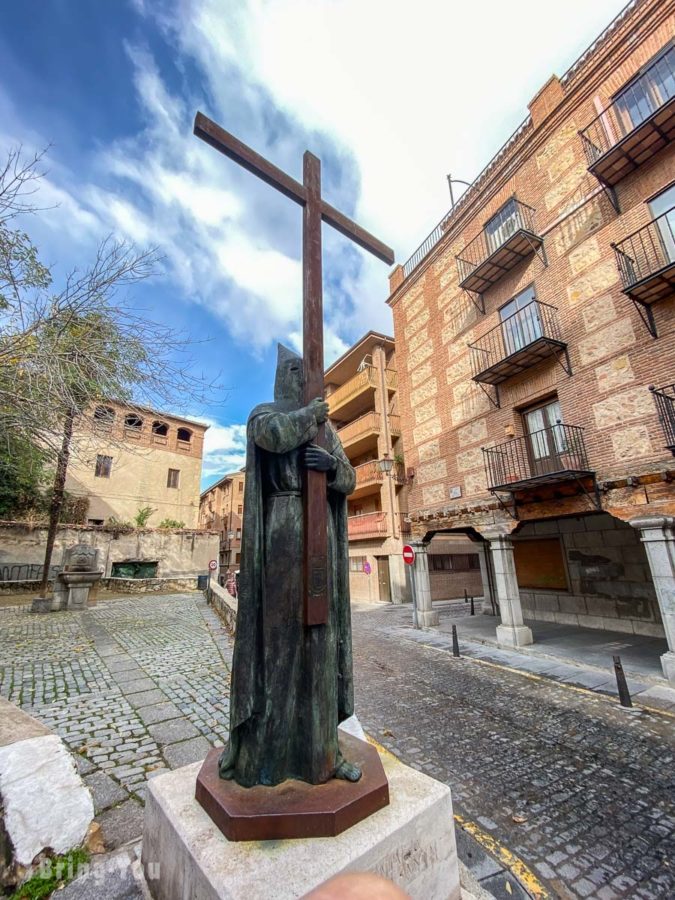
Going strong since the 12th century, the medieval church appeals with its remarkable Romanesque bell tower.
Designated as a National Monument in 1896, the tower is recognized as a Property of Cultural Interest and has been under protection since. In 1985, the Church of Saint Stephen joined the UNESCO World Heritage Site beside the Old Town of Segovia and its Aqueduct. UNESCO’s decision was influenced by Segovia’s exceptional architectural treasures, notably its Romanesque churches.
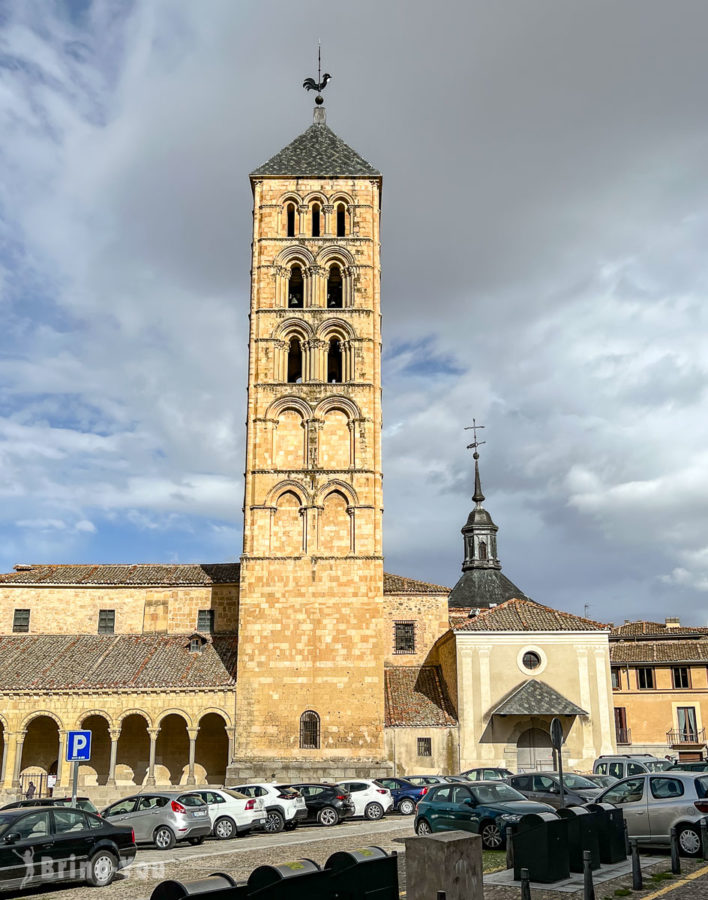
Alcazar of Segovia
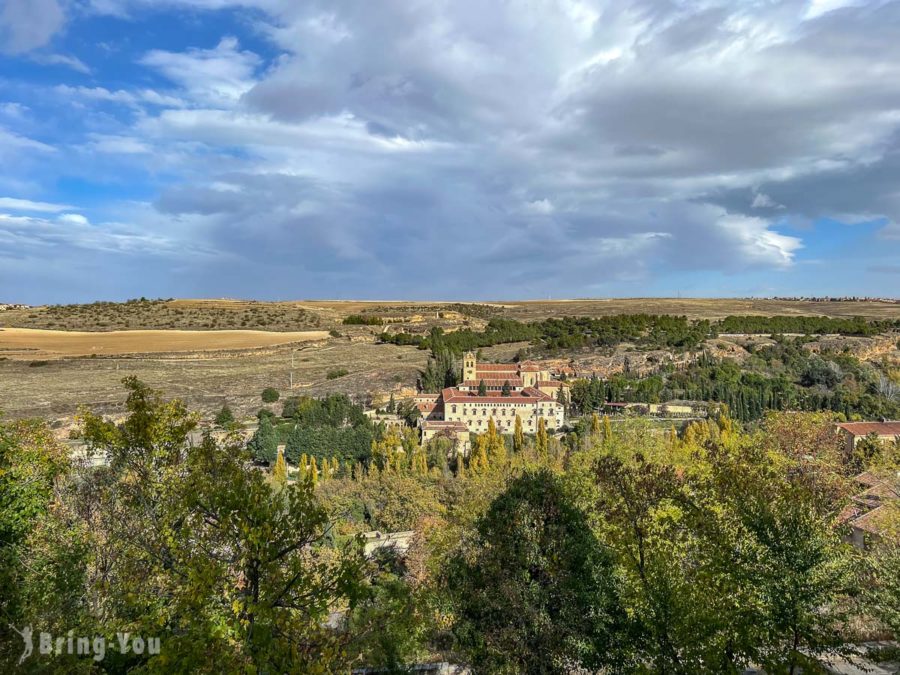
Along with the aqueduct, the Alcazar speaks for the mighty history of Segovia, standing tall as a stone fortress by the northwest border of Segovia.
The bold fortification lies between two rivers, Clamores and Esrema, standing against the backdrop of the Guadarrama Mountains.
Today, the amazing military structure stands the test of time on top of a granite rock. The name
Alcazar comes from an Arabic origin, signifying a palace or royal residence. For that reason, the Alcazar of Segovia is essentially the royal residence of Segovia.
Over time, it transitioned from a fortress to a royal palace, parliament seat, state prison, Artillery College, and Military Academy. The distinctive ship-shaped bow makes it one of the most incredible photogenic spots in Segovia.

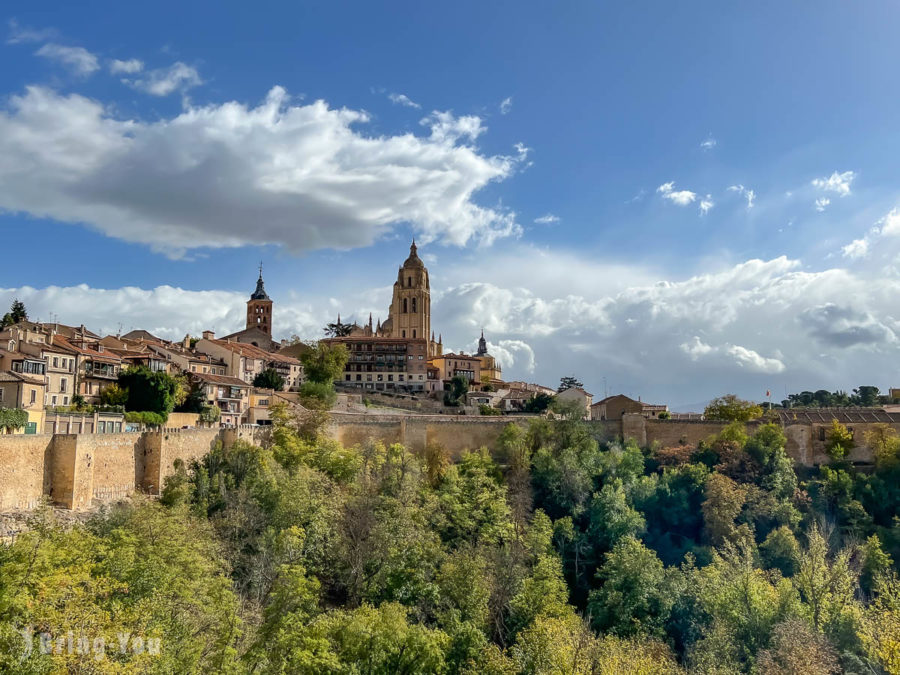
Walls of Segovia
The walls are part of the Alcazar, stretching out along the mountainside, offering an impeccable vista of the fortress and cathedral. Today, most of the walls still stand the test of time, corresponding to as early as the 11th century with a perfectly executed mixture that comprises various materials.
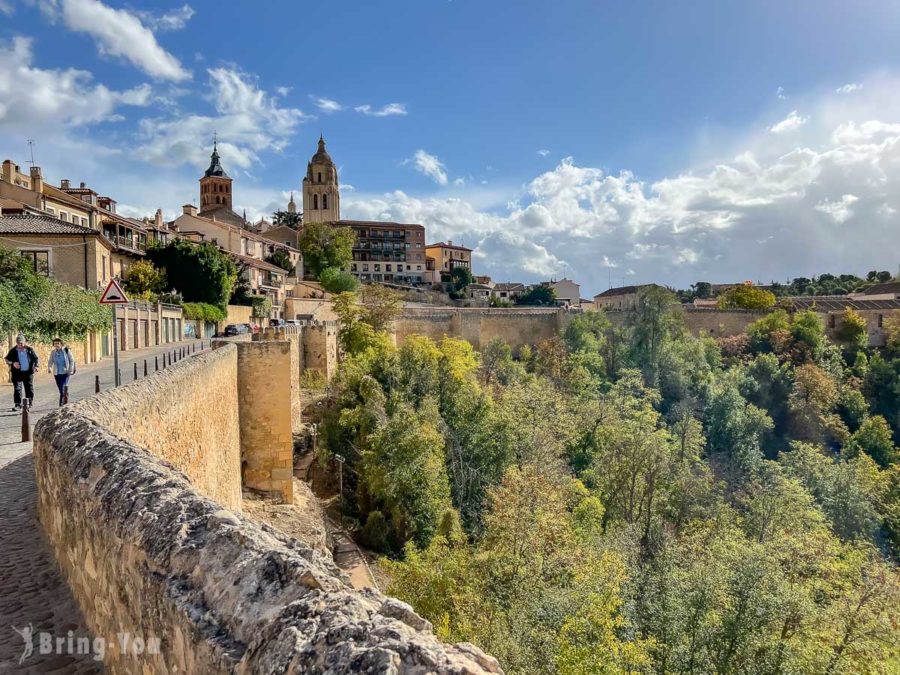
The arched doors are beyond comparison to admire, crafted in different styles including horseshoe, padded, and rectangular designs.
The San Andrés Gate and the Tourist Information Point form two ends of the walls. From there, you can enter the Jewish Quarter of Segovia.
Jewish Quarter of Segovia
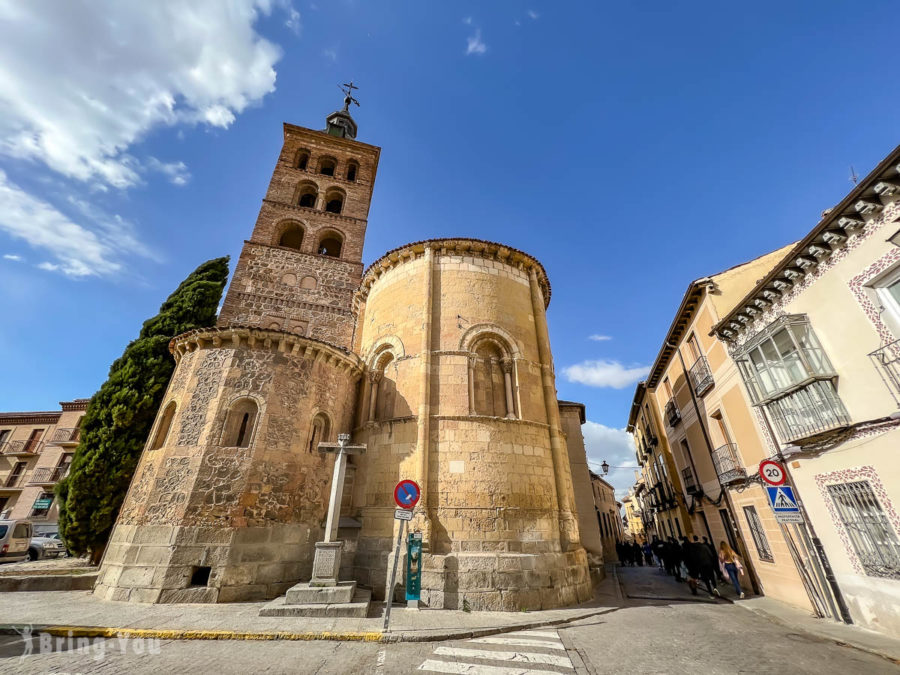
This neighborhood is right behind the Walls of Segovia, once inhabited by the Hebrew community in the 12th century before they were ordered to convert to Christianity by King Ferdinand and Queen Isabella.
Today, a few houses and five synagogues are preserved along with Rabbinic schools and Hebrew butcher’s shops that reflect the remaining culture of the Jews.
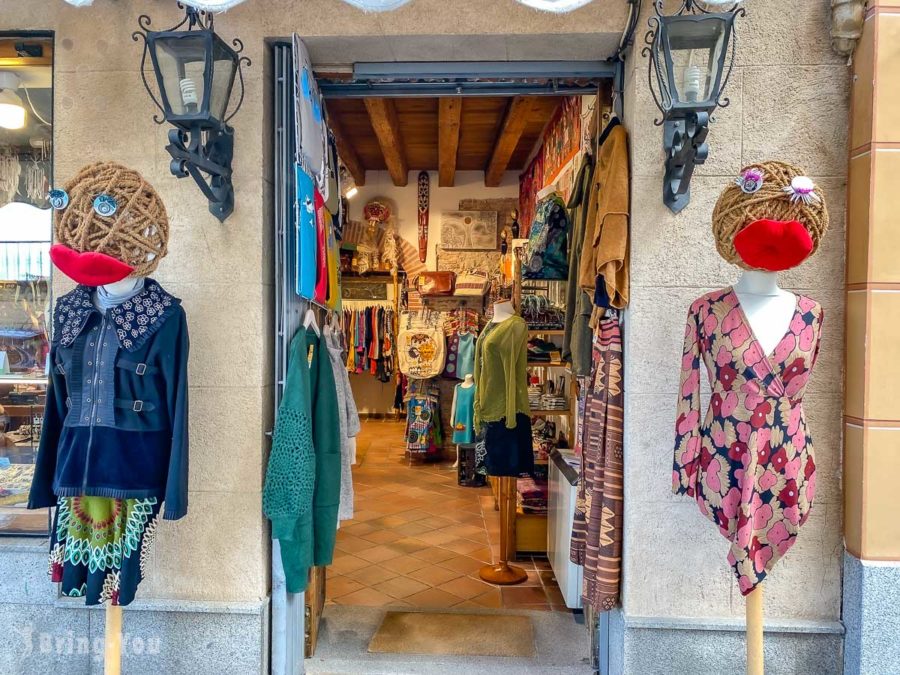
Segovia Cathedral
Sandwiched between the Jewish Quarter and Plaza Mayor, Segovia Cathedral is a must-see for history buffs to Segovia, standing at the highest point of the town.
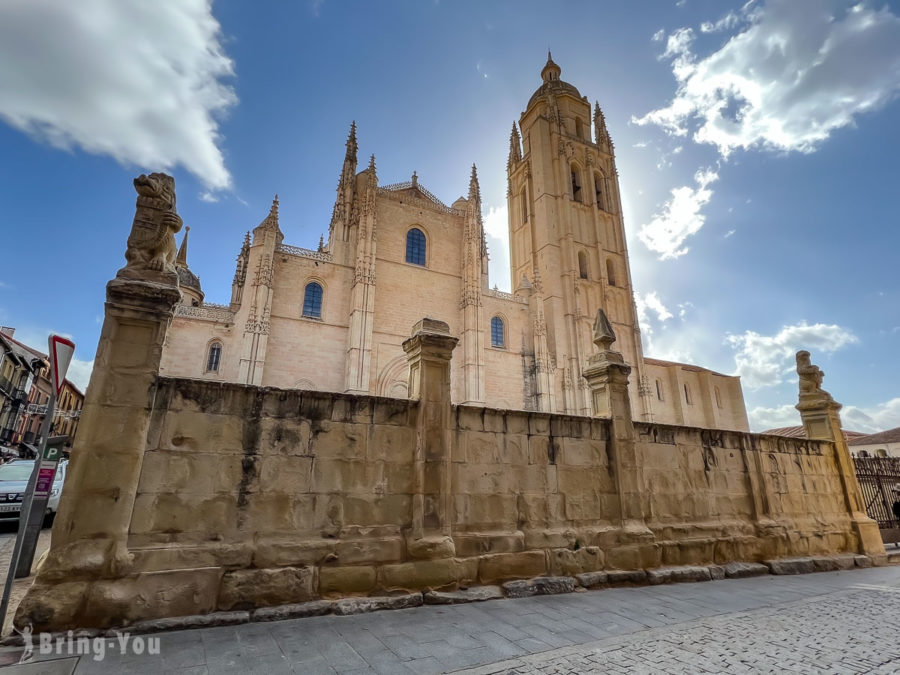
The church has been around since the 16th century under the reign of Carlos V, boasting a remarkable Gothic style.
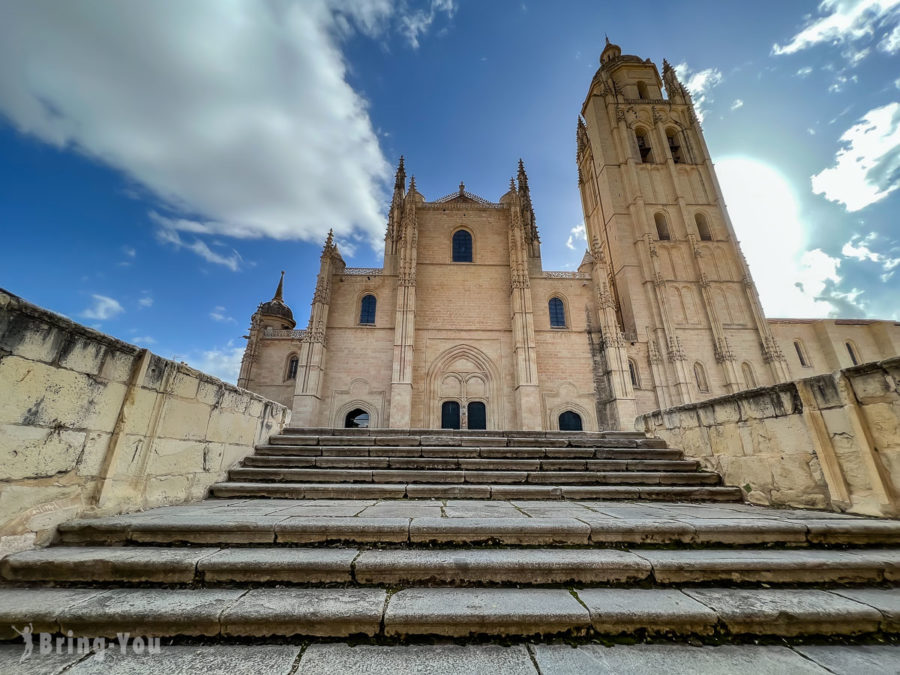
Today, the 88-meter-high conical bell tower of the church stands still, dubbed the tallest of its kind in all of the country. You need a ticket to enter and it only costs EUR 4. Some areas remain free to visit for the public on Sunday masses.
A guided tour of the tower is offered at EUR 10 but is only limited to four tours a day.
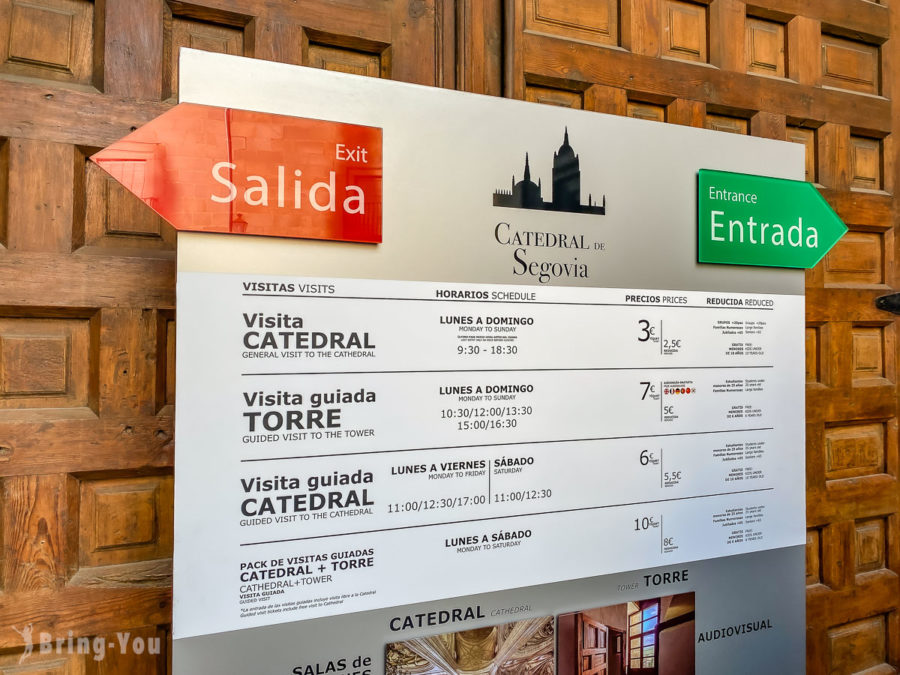
Mirador de la Canaleja
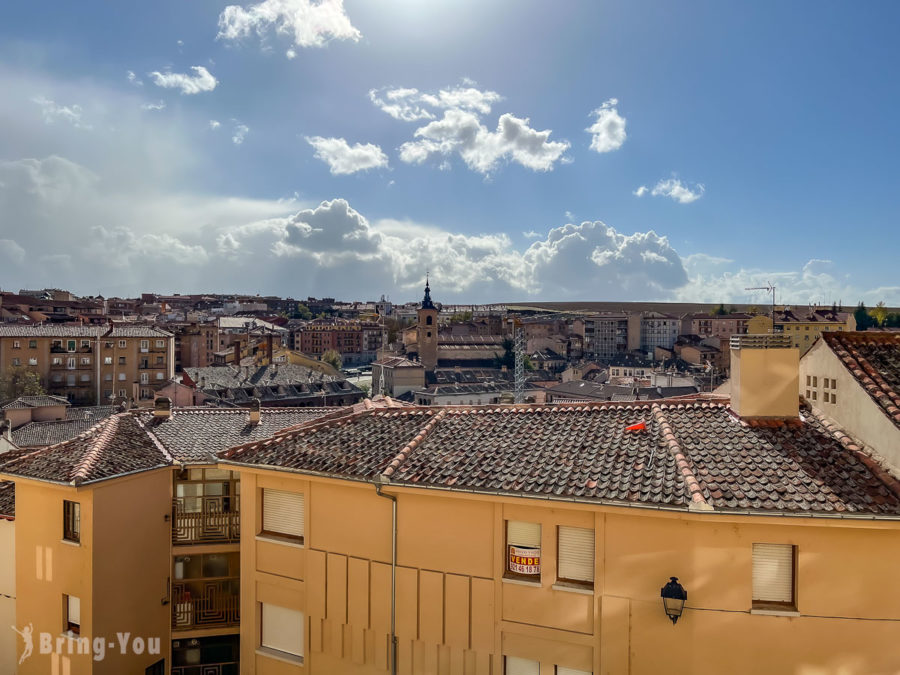
Just a minute’s walk west of the Roman Aqueduct, Mirador de la Canaleja is known as the best viewpoint in Segovia, tucked along the boulevard that takes you back to Plaza Mayor. Give it a credit while resting your tired cored from the walking. Right here, you’re promised some of the most radiant city views out of this observation deck.
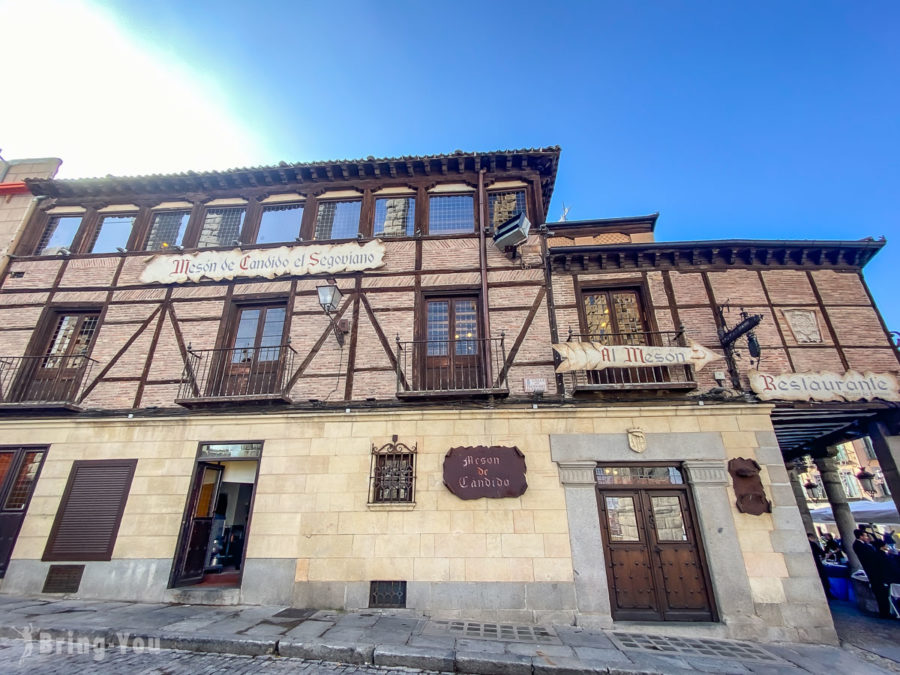
2 Best Foods Spots In Segovia
Mesón De Cándido
This is a splendid Spanish restaurant by Segovia’s aqueduct, famed for its Michelin-starred status and renowned roasted pig. Right here, you can experience a unique tradition where they chop the piglet on a plate, smashing it for good luck.
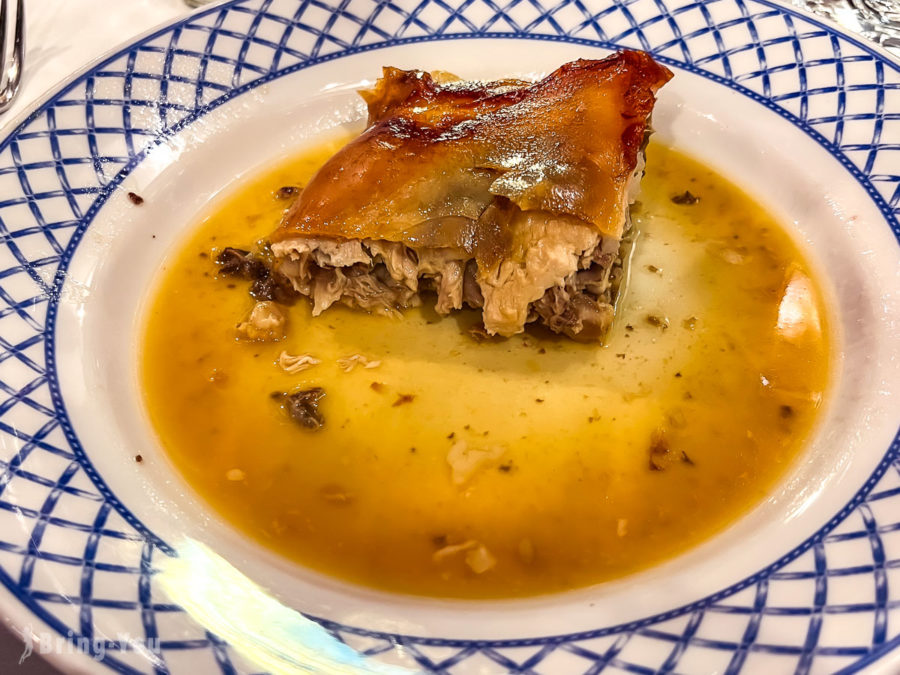
Arguably Segovia’s most renowned restaurant, Mesón De Cándido is consistently bustling, especially during peak summer. Make sure to steal your seat in advance with a reservation on their website if you plan to dine during busy dining hours.
With a retro decor featuring classical wooden furniture, adorned with shotguns and deer heads, Mesón De Cándido exudes a medieval charm. While enjoying your meal, soak in the atmosphere and catch a view of the Roman aqueduct through the windows.
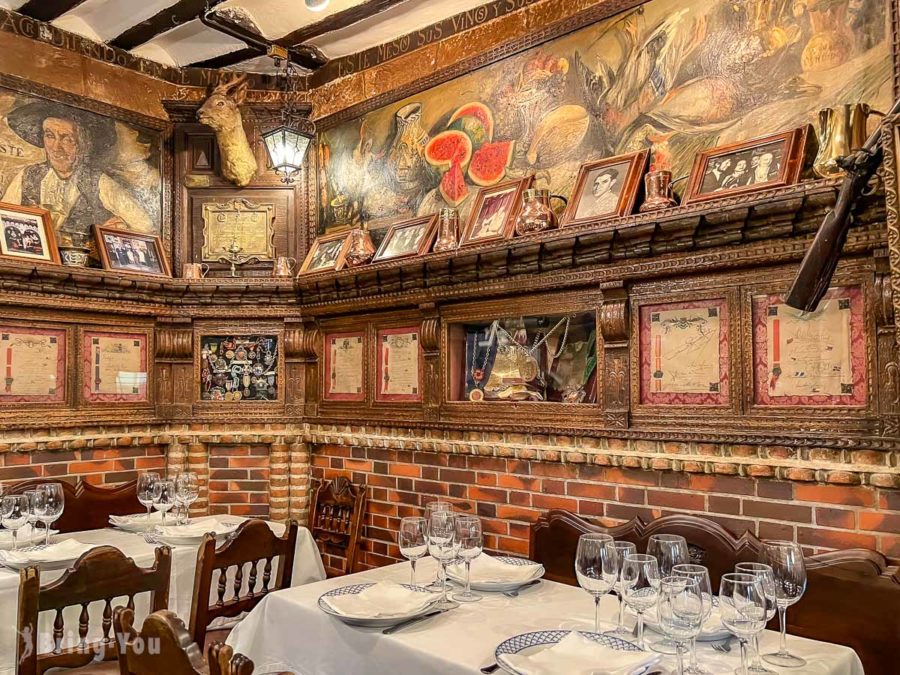
Lemon and Mint (Pastelería Limón y Menta)
Whenever your sweet tooth demands attention, stop by Pastelería Limón y Menta for some tasty treats! Known as a delightful spot on Plaza Mayor, the bakery captivates with its authentic vibes and the famous Ponche Segoviano. For a delicious treat, I highly recommend Ponche Segoviano and Bechamel Croissant.
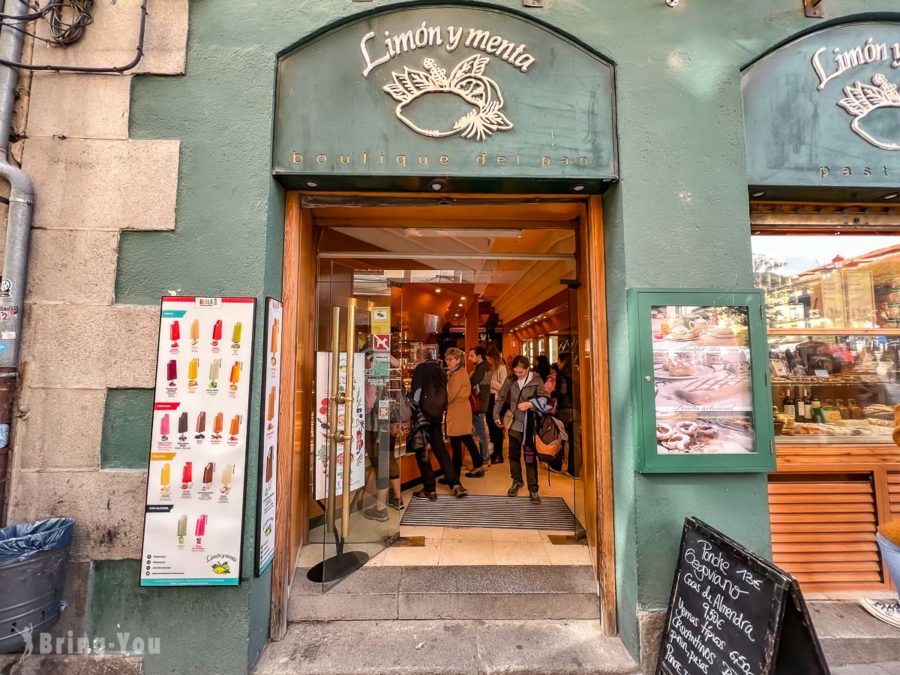
Going beyond marvelous Roman architecture and grand castles, Segovia opens a gate to a whole different world with its medieval charm.
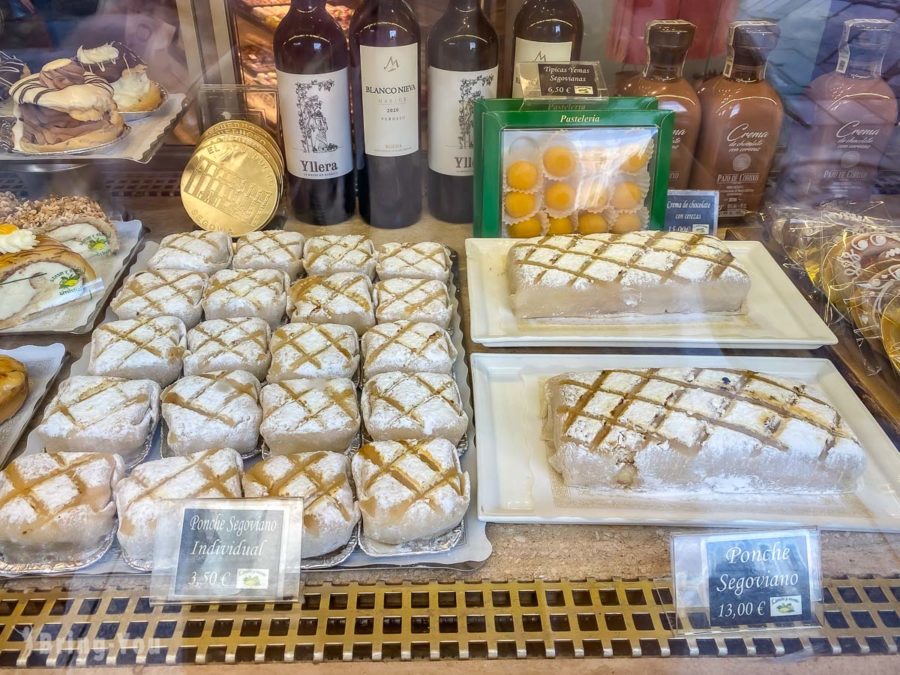
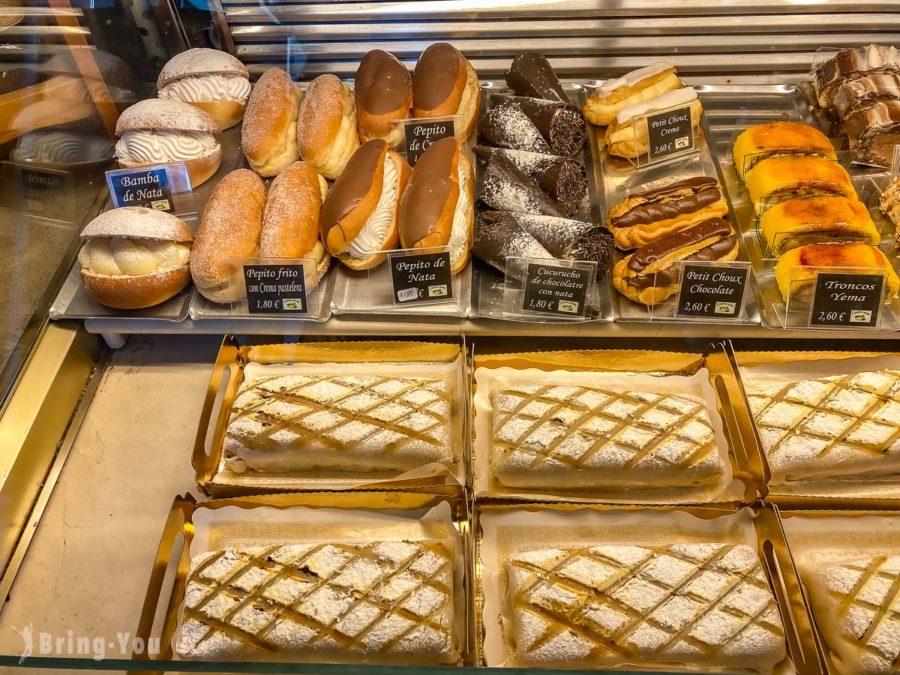
Looking for more things to do in Spain? Check out my travel guides below to be inspired!
